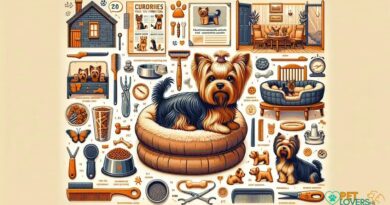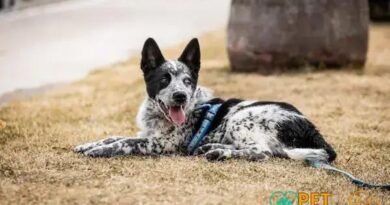What is: Aging gracefully in dogs
What is Aging Gracefully in Dogs?
Aging gracefully in dogs refers to the process by which dogs grow older while maintaining their health, vitality, and quality of life. As dogs age, they undergo various physical and behavioral changes, making it essential for pet owners to understand how to support their furry companions during this transition. This concept emphasizes the importance of proactive care, including regular veterinary check-ups, a balanced diet, and appropriate exercise tailored to the dog’s age and health status.
Signs of Aging in Dogs
As dogs age, they may exhibit several signs that indicate they are entering their senior years. Common signs include graying fur, decreased energy levels, changes in appetite, and alterations in behavior such as increased irritability or anxiety. Understanding these signs is crucial for pet owners to provide the necessary care and adjustments to their dog’s lifestyle, ensuring they continue to thrive as they age.
Nutrition for Senior Dogs
Proper nutrition plays a vital role in helping dogs age gracefully. Senior dogs often require a diet that is lower in calories but higher in essential nutrients to maintain their health. Foods rich in antioxidants, omega fatty acids, and high-quality proteins can support their immune system, joint health, and overall well-being. Consulting with a veterinarian to formulate a tailored diet plan is an excellent step towards ensuring your aging dog receives the best nutrition possible.
Exercise and Activity Levels
Regular exercise is essential for senior dogs to maintain their physical health and mental stimulation. However, the type and intensity of exercise should be adjusted according to the dog’s age and physical condition. Gentle walks, swimming, and interactive play can help keep older dogs active without overexerting them. Engaging in regular activity not only helps manage weight but also promotes joint health and reduces the risk of age-related diseases.
Regular Veterinary Check-ups
Frequent veterinary visits become increasingly important as dogs age. Regular check-ups allow for early detection of potential health issues, such as arthritis, dental problems, or organ dysfunction. Routine blood tests and physical examinations can help monitor your dog’s health status and adjust their care plan accordingly. Staying proactive about veterinary care is a key component of aging gracefully in dogs.
Grooming Needs for Older Dogs
As dogs age, their grooming needs may change. Older dogs may require more frequent grooming sessions to manage shedding, matting, and skin conditions. Regular grooming not only keeps their coat healthy but also provides an opportunity for pet owners to check for lumps, bumps, or skin irritations that may require veterinary attention. Additionally, maintaining good dental hygiene is crucial for older dogs to prevent dental disease and associated health issues.
Creating a Comfortable Environment
Providing a comfortable living environment is essential for aging dogs. This includes ensuring they have a cozy bed, easy access to food and water, and a safe space to move around. Consider using ramps or non-slip mats to help them navigate their surroundings more easily. A calm and supportive environment can significantly enhance the quality of life for senior dogs, allowing them to feel secure and relaxed.
Understanding Behavioral Changes
Behavioral changes are common in aging dogs and can be attributed to various factors, including cognitive decline, pain, or changes in their environment. Pet owners should be attentive to these changes and seek to understand their dog’s needs. Providing mental stimulation through puzzle toys, training sessions, or interactive games can help keep their minds sharp and engaged, promoting a happier and healthier aging process.
Quality of Life Considerations
Assessing the quality of life for aging dogs is a critical aspect of responsible pet ownership. This involves evaluating their physical health, emotional well-being, and overall happiness. Tools like the HHHHHMM scale can help pet owners make informed decisions about their dog’s care and comfort. Ensuring that your dog enjoys a good quality of life is paramount as they age, allowing them to live their golden years with dignity and joy.
End-of-Life Care
As difficult as it may be, end-of-life care is an important consideration for aging dogs. Understanding when it may be time to say goodbye is a compassionate aspect of pet ownership. Discussing options with a veterinarian, including palliative care or hospice services, can help ensure that your dog remains comfortable and pain-free in their final days. Making thoughtful decisions during this time reflects the love and commitment you have for your aging companion.


